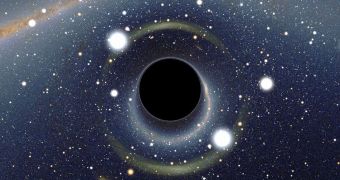Astronomers may soon be able to determine with greater accuracy whether the core of the Milky Way is inhabited by a black hole, as many experts have been saying for a long time. While there is a great probability that this is the case, direct evidence to support this is still missing.
The presence of a black hole would explain numerous weird phenomena that researchers are currently seeing at the galactic core. However, a dark behemoth is not the only possible explanation for what is going on at that location, simply the easiest.
Fortunately, researchers say that they are very close to being able to image this weird region of space directly. Additionally, scientists will soon find it easier to discover the physics at work here, which could in turn reveal more data on black holes and galactic cores.
Another added benefit of being able to peer deep within this region is that astrophysicists could potentially learn more about quantum mechanics and the theory of general relativity, but especially how the two interact, Space reports.
Finding a unified theory of everything has been an important goal of scientists for many years, but attempts made thus far to reconcile the two have largely failed. Being able to study black holes directly could change that.
One of the things astronomers notice at the core of the Milky Way – one of the main arguments for why they believe a 4-million-solar-mass black hole lies there – is that multiple stars appear to orbit something that does not show up on any scans.
“The really important thing is that all the orbits have a common focus. There's one point on the sky, and there's nothing you can see on images at this position,” Harvard-Smithsonian Center for Astrophysics (CfA) astrophysicist Mark Reidof explains.
But this area, known as Sagittarius A*, is not empty, since radio signals are being generated at its core. Additionally, the object moves by less than 1 kilometer per second, meaning that it is barely influenced by the gravitational pull of the multiple stars that orbit around it.
“The only way that this can happen is if Sagittarius A* is tied to a very massive object. When you do the analysis, you get a lower limit of 4 million solar masses,” Reid explains.

 14 DAY TRIAL //
14 DAY TRIAL //